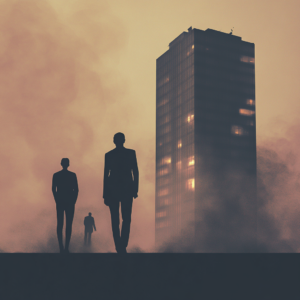The creative process is a fascinating journey that involves various stages of ideation, exploration, and refinement. However, it’s not uncommon to find yourself questioning whether you’re procrastinating or simply allowing your subconscious mind to work its magic. This article aims to shed light on this dilemma and provide practical insights into differentiating between procrastination and giving yourself the time needed for the creative process.

Understanding the Creative Process
Before delving into the differences, it’s crucial to comprehend the stages of the creative process from idea to execution:
- Idea Generation: The initial phase where ideas flow, often spontaneously and without structure.
- Incubation: This is the period of subconscious processing where ideas simmer beneath the surface. We’ll spend more time on this concept as it relates to Productive Pacing.
- Illumination: The ‘Aha!’ moment when a breakthrough idea emerges from the subconscious.
- Evaluation: Assessing and refining the idea’s feasibility and potential.
- Minimum Viable Product: Developing the idea into a tangible product, often involving iterative work until an “MVP” (Minimum Viable Product) of some kind is ready that can prove your concept.
- Execution: Full scale roll out of your MVP which may involve prepping a team on the MVP.
Incubation
Incubation in the creative process presents a fascinating dichotomy. It can be both exhilarating and vexing, particularly for those who are eager to forge ahead. This phase frequently occurs when tantalizing fragments of your project’s puzzle are coming together, but numerous loose ends remain, leaving you with a sense of directionlessness.
The Allure of Premature Action: For those with less experience, there’s a strong allure to leap into execution prematurely. This impulse often arises from a desire for immediate progress or the need to test various ideas quickly. It’s a mindset that says, “Let’s try this out and see what sticks.” While experimentation is a fundamental aspect of the creative process, doing so without a well-defined concept can lead to wasted effort, inconsistency, and a lack of coherence in the final outcome.
The Perils of Premature Execution: Rushing into execution without a clearly defined concept carries several risks:
- Directionless Endeavors: Absent a well-defined concept, your project lacks a guiding vision. This can result in design choices, narrative arcs, or product features that do not align with your intended message or purpose.
- Resource Drain: Premature execution can deplete your valuable resources—time, money, and effort—as you may find yourself backtracking or redoing work that doesn’t align with your evolving concept.
- Inconsistency: Hastily diving into execution can breed inconsistency across different elements of your project. This inconsistency can bewilder your audience and dilute the overall impact of your creative work.
The Art of Productive Pacing
Amidst the incubation phase, it’s essential to embrace the art of “productive pacing.” This means practicing patience and allowing your ideas to mature organically. This gestation period is a time for research, brainstorming, gathering inspiration, and potentially seeking feedback from trusted colleagues or mentors. It’s a deliberate choice to refrain from rushing ahead and to ensure that when you finally embark on execution, you possess a crystal-clear sense of direction.
Allowing your subconscious to contribute to the creative process can lead to brilliant outcomes. Here’s how to recognize when you’re genuinely giving yourself time:
- Engaged Mindfulness: You’re consciously engaged in activities that complement the creative process, such as brainstorming, researching, or seeking inspiration.
- Intentional Breaks: Taking strategic breaks to let your mind wander and process ideas rather than completely avoiding the task.
- Reflection and Exploration: Deliberately reflecting on ideas and allowing them to evolve in your mind.
- Positive Anticipation: Feeling excited about revisiting the creative task after a break, with a sense of anticipation for new insights.
What Procrastination Looks Like
Procrastination involves delaying tasks despite being aware of their importance. Here’s how to identify it during the creative process:
- Lack of Focus: Constantly shifting attention from the creative task to trivial matters.
- Excuse-Making: Rationalizing avoidance with justifications like “I’m not in the right mood” or “I work better under pressure.”
- Unproductive Busy-ness: Engaging in other activities that seem productive but are actually distractions from the creative work.
- Avoiding bad news: Procrastination often emerges as a coping mechanism employed by individuals to shield themselves from the distressing prospect of encountering bad news.
- Feelings of Guilt: Experiencing a sense of guilt or unease due to neglecting the creative task.
The act of procrastination serves as a temporary reprieve, allowing individuals to defer their engagement with potentially distressing updates, whether they pertain to personal matters, global events, or even mundane responsibilities. By immersing ourselves in less daunting tasks or distractions, people inadvertently create a psychological barrier that buffers them from the emotional toll of facing unfavorable realities. However, while procrastination may provide transient relief, it often exacerbates the very stress it aims to alleviate, as looming deadlines and unaddressed issues accumulate.
Strategies to Navigate the Fine Line
Balancing between productive pacing and procrastination requires mindful approaches:
- Set Goals and Deadlines: Define specific goals and reasonable deadlines for each phase of the creative process to avoid indefinite delays.
- Structured Breaks: Allocate time for breaks during your work sessions, allowing your mind to rest and process without wandering aimlessly.
- Mindful Distraction: Engage in activities that stimulate creativity, like reading, going for a walk, or exploring new environments.
- Accountability Partners: Share your creative goals with someone who can hold you accountable and provide constructive feedback.
Developing Self-Awareness
Cultivating self-awareness is essential for recognizing the fine line between procrastination and giving yourself time:
- Monitor Your Behavior: Regularly assess your actions during creative sessions and breaks to identify patterns of avoidance or productive pacing.
- Journaling: Maintain a creative journal to document your thoughts, breakthroughs, and moments of intentional reflection.
- Embrace Imperfection without Judgement: Understand that not every creative moment will yield groundbreaking results, but each contributes to the overall process.
Distinguishing between procrastination and allowing yourself time for the creative process is a skill that requires practice and self-awareness. By setting clear goals, embracing structured breaks, and understanding your own patterns, you can harness the power of your subconscious mind while maintaining a healthy creative momentum. Remember, the journey of creativity is as much about patience and pacing as it is about innovation and inspiration.





